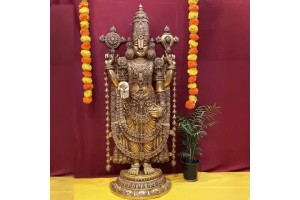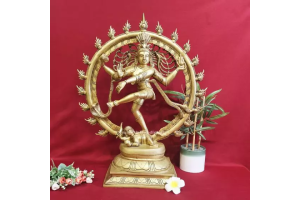Discover the Timeless Beauty of German Silver Pooja Items: Elegance and Tradition


Introduction
In the realm of religious and spiritual practices, the significance of Pooja (worship) holds a special place in many cultures. Pooja ceremonies are often accompanied by the use of intricately crafted and symbolically rich items, enhancing the sanctity of the ritual. Among the myriad choices available, German silver pooja items stand out for their timeless beauty and cultural significance. This article explores the artistry, cultural relevance, and enduring charm of German silver Pooja items.
Understanding German Silver
Contrary to its name, German silver is not composed of silver but is a metal alloy made from copper, zinc, and nickel. Also known as nickel silver or alpaca silver, German silver exhibits a lustrous silver-like appearance, making it a popular choice for crafting aesthetically pleasing and durable artifacts. The alloy's versatility, affordability, and ability to mimic the look of silver make it an excellent material for creating Pooja items that are both functional and decorative.




Artistry in Design
German silver Pooja items are celebrated for their intricate and detailed designs. Artisans often employ traditional craftsmanship techniques, such as filigree work, engraving, and embossing, to create exquisite pieces that reflect a deep understanding of cultural and religious symbolism. From intricately carved diyas (oil lamps) to finely detailed incense holders, each item is a testament to the skilled hands and artistic vision of the craftsmen.
Symbolism and Cultural Significance
Pooja ceremonies are not just rituals; they are imbued with symbolism and cultural significance. German silver Pooja items play a crucial role in enhancing the visual appeal of these ceremonies while also carrying symbolic meanings. For example, the design of a Pooja thali (a plate used for rituals) may include motifs representing auspicious symbols like lotus flowers, peacocks, or religious symbols specific to a particular tradition. The use of such symbols adds depth and meaning to the Pooja, connecting the worshipper to their faith in a more profound way.




Durability and Longevity
Aside from their aesthetic appeal, German silver Pooja items are valued for their durability. The alloy's resistance to corrosion and tarnishing ensures that these items maintain their beauty over time, becoming cherished heirlooms passed down through generations. This longevity not only adds to their material value but also enhances their cultural and emotional significance within families and communities.
Versatility in Functionality
German silver Pooja items come in a variety of forms, serving different functions within the context of religious ceremonies. From the essential diya to the intricately designed idols and ritual utensils, these items cater to a wide range of needs. The versatility of German silver allows artisans to create items that are not only aesthetically pleasing but also practical, making them essential components of religious practices.




Preserving Traditional Crafts
The creation of German silver Pooja items involves traditional craftsmanship that has been passed down through generations. By supporting artisans who specialize in these crafts, individuals contribute to the preservation of traditional skills and the promotion of handmade, sustainable products. This connection to heritage adds an extra layer of meaning to German silver Pooja items, as they become not just objects of worship but also guardians of cultural legacy.
Conclusion
German silver Pooja items encapsulate the essence of spirituality, tradition, and artistry. Through their intricate designs, cultural symbolism, and enduring quality, these items have become an integral part of religious ceremonies across diverse communities. As we appreciate the beauty and craftsmanship of German silver Pooja items, let us also recognize the artisans who dedicate their skills to preserving these traditions, ensuring that the allure of these timeless artifacts continues to be passed on to future generations.





